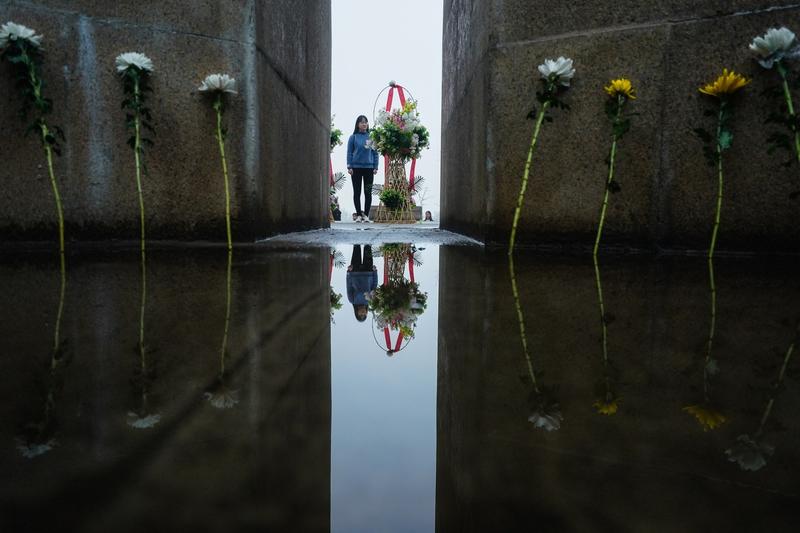 A student pays tribute to martyrs at a square dedicated to air force martyrs who died resisting Japanese aggression in Nanjing, Jiangsu province, April 2, 2021. (PHOTO/XINHUA)
A student pays tribute to martyrs at a square dedicated to air force martyrs who died resisting Japanese aggression in Nanjing, Jiangsu province, April 2, 2021. (PHOTO/XINHUA)
BEIJING - China saw the peak of tomb-sweeping activities on Saturday, the first day of the three-day Tomb Sweeping Day holiday, according to the Ministry of Civil Affairs.
Noting that this year's Tomb-sweeping Day is the first of its kind observed under regular epidemic control, the ministry said that over 32,000 funeral-service agencies with on-site tomb-sweeping services were open across the country on Saturday, receiving about 19.3 million people.
 A resident pays tribute to martyrs at a monument dedicated to air force martyrs who died in resisting Japanese aggression in Nanjing, Jiangsu province, April 2, 2021. (PHOTO/XINHUA)
A resident pays tribute to martyrs at a monument dedicated to air force martyrs who died in resisting Japanese aggression in Nanjing, Jiangsu province, April 2, 2021. (PHOTO/XINHUA)
READ MORE: Tomb-sweeping goes virtual
Meanwhile, about 1.85 million Chinese people opted to mourn the deceased through 1,900 online platforms, the ministry added.
It pointed out that environmentally friendly tomb-sweeping activities were promoted nationwide for this year's holiday, making the offering of flowers, online mourning and other activities a new trend.
 Students from Ningxia Medical University pay tribute to heroes, martyrs and organ doners in Yinchuan, Ningxia Hui autonomous region, April 2, 2021. (PHOTO/XINHUA)
Students from Ningxia Medical University pay tribute to heroes, martyrs and organ doners in Yinchuan, Ningxia Hui autonomous region, April 2, 2021. (PHOTO/XINHUA)
ALSO READ: Tomb sweeping innovation goes green
Expecting the tomb-sweeping activities to continue for the next two days, the ministry reminded the public to pay close attention to the local epidemic situation, follow personal-protection measures, devise their itineraries to avoid peak times and mourn the deceased in a civilized and low-carbon way.
 Wei Tieliang, keeper of a memorial hall dedicated to martyrs who died in the war against Japanese aggression, salutes to the memorial tablets of martyrs in Changyi, Shandong province, April 2, 2021. (PHOTO/XINHUA)
Wei Tieliang, keeper of a memorial hall dedicated to martyrs who died in the war against Japanese aggression, salutes to the memorial tablets of martyrs in Changyi, Shandong province, April 2, 2021. (PHOTO/XINHUA)
 Descendents of Chen Zigang, a Red Army martyr, visits his tomb at a cemetery for martyrs from Sichuan-Shaanxi Revolutionary Base in Tongjiang, Sichuan province, April 3, 2021. (PHOTO/XINHUA
Descendents of Chen Zigang, a Red Army martyr, visits his tomb at a cemetery for martyrs from Sichuan-Shaanxi Revolutionary Base in Tongjiang, Sichuan province, April 3, 2021. (PHOTO/XINHUA


